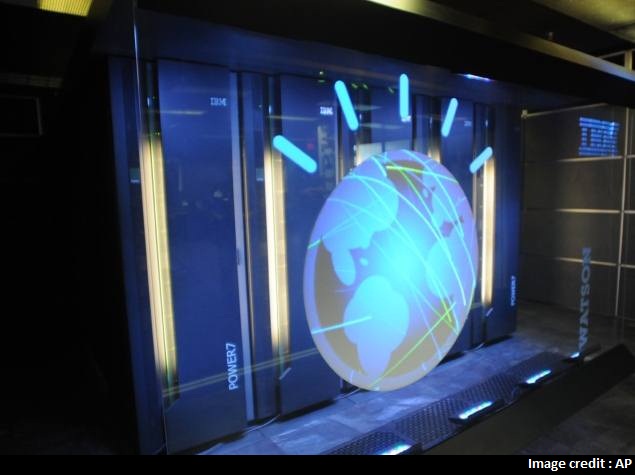Error at IBM Lab Finds New Family of Materials
Advertisement

As a research chemist at an IBM laboratory, Jeannette M. Garcia spends her days mixing and heating chemicals in pursuit of stronger and more easily recyclable plastics. Recently she followed a simple formula that required mixing three components in a beaker. Somehow she missed a step, leaving out a chemical. She returned to find her beaker filled with a hard white plastic that had even frozen the stirrer.
© 2014 New York Times News Service
Garcia tried grinding the mystery material, to no avail. Then she took a hammer to the beaker to free it.
That laboratory error has led to the discovery of a new family of materials that are unusually strong and light, exhibit "self-healing" properties and can be easily reformed to make products recyclable.
The materials - two new types of synthetic polymers - could have transportation uses. Because of their recyclability, they also could have an impact on consumer products, as well as on the industrial packaging for microelectronics components.
The findings were reported Thursday in the journal Science by a research team at IBM's Almaden Research Laboratory in San Jose, California.
Advertisement
There has been an explosion of new polymer materials in recent years, but most of them are variants of existing synthetic classes that are characterized by long chains of simpler molecules connected through chemical bonds. The materials are today ubiquitous in modern life, found in everything from paints and contact lenses to garments and batteries.
"They are just pervasively used materials," said James L. Hedrick, an advanced organic materials scientist at IBM in San Jose. "This is the polymer age."
Advertisement
The IBM scientists say that this is the first distinctly new family that has been discovered in several decades.
They said they had not yet named the new family, which they have code-named "Titan" and "Hydro." The materials are not yet ready for commercial use, but the scientists said they had already begun working with several universities on composite applications that could have a significant impact on manufacturing and fabrication in the fields of transportation, aerospace and microelectronics.
Advertisement
The materials are known as thermosets because they are formed using a heating process. Their strength comes from their three-dimensional network of chemical bonds.
The polymers have the rigidity of bones, one of the strongest biological materials, and can be made as much as 50 percent stronger by blending them in composite form with materials like carbon nanotubes. They also tend to perform better than other types of polymers under high temperatures.
IBM has invested heavily in new computational chemistry technologies that rely on supercomputers. The researchers were able to build a computer model of the new material, characterizing it in two distinct types, one that was "soft and gooey" and the other extremely rigid.
"There is this conventional wisdom out there that the main classes of polymer materials have all been discovered," said Bob Allen, a senior manager for Chemistry and Advanced Materials Research at the laboratory. "But with this approach that we've taken with heavy doses of computational time, as well as hard-core laboratory synthesis, we've come up with a new one."
The IBM finding evokes the discovery of Teflon, said Timothy E. Long, a chemistry professor at Virginia Tech.
"Serendipity is the mother of invention," he said.
In 1938, while looking for alternative refrigerants, Roy Plunkett, a DuPont chemist, inadvertently polymerized tetrafluorethylene, accidentally creating one of the most slippery materials.
In a perspective essay accompanying the research article in Science, Long argued that the new materials represented a significant advance in efforts to make consumer goods more easily recyclable, particularly electronics, which have become a major waste problem.
"Thermosets are designed to be exceptionally stable in terms of temperature and mechanical properties; they are not designed to be reversible," he said. "To think about materials that have all of these properties, and which are also recyclable, is an advance."© 2014 New York Times News Service
For the latest tech news and reviews, follow Gadgets 360 on X, Facebook, WhatsApp, Threads and Google News. For the latest videos on gadgets and tech, subscribe to our YouTube channel. If you want to know everything about top influencers, follow our in-house Who'sThat360 on Instagram and YouTube.
Advertisement
